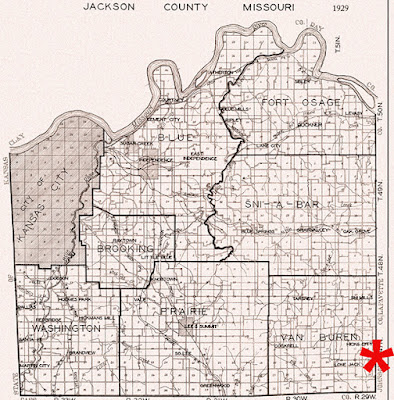Kentucky Classic #5: Rose Tree by Becky Collis
Decades ago I saw this quilt in Missouri, attributed to Zerelda McClary Oliver, probably born in Paint Lick, Kentucky in Garrard County. She died in Kansas but the quilt shows her Kentucky roots.
Zerelda E. McClary Oliver (1822-1907)
Her design is obviously associated with the Garrard County quilts:
Carnations, similar leaves and an abundance of Rose Trees around the edge.
Rose Trees of all kinds are important in the Kentucky Classic medallion.
But they are not a design unique to this regional pattern.
The Rose Tree or Missouri Rose, as Carrie Hall called it,
was popular all over the south before the Civil War.
Lucinda Chesnut's Rose Tree or Missouri Rose in Carrie Hall & Rose Kretsinger's
Romance of the Patchwork Quilt.
I found maker Lucinda Garrard Chesnut (1827- 1894) born in Clay County,
Kentucky, moved to Missouri in 1859 and buried in Platte City, Missouri,
near Kansas City. She was granddaughter to Governor James Garrard
for whom Garrard County is named. Her family remained Union loyalists.
This month's pattern can also tell us of Margaret Jane Arnold Allen (1827-1902), another transplanted Kentuckian. After Missouri was created as a slave state in 1821 many Kentuckians migrated west including Margaret, born in Garrard County.
We often forget that Missouri and Kentucky share a border.
Margaret came to Jackson County with husband Eastham Allen and two sons about 1857.
Their son's obituary
Hicks City is in the southeast corner of Jackson County
Margaret's story is typical of many Kentucky-born Missourians. The Lincoln administration worked hard to keep Kentucky loyal. The President wrote in 1861, "I think to lose Kentucky is nearly the same as to lose the whole game…Kentucky gone, we cannot hold Missouri...."
Although both Kentucky and Missouri remained in the Union, Missouri's Kentucky transplants were much more inclined than their Kentucky relatives to follow southern loyalties as Missouri Confederates and guerilla fighters.
The Missouri countryside was a nightmare of guerilla warfare.
The Allens did not appear to hold slaves (no record of the Allens in the 1860 Jackson County census schedule) but when the war broke out Eastham joined Sterling Price's Confederate Army. Sergeant Allen fought in the Battle of Lone Jack and spent much of the war in Arkansas.
Escaping war-ravaged Missouri Margaret and the children returned to Kentucky. She may have had to leave after Order #11 took effect in 1863 banishing Confederate sympathizers from Jackson County. After Eastham surrendered at Shreveport, Louisiana he traveled to Kentucky to take his family back to Missouri.
The Allens left few records and I could find nothing about Margaret making quilts but her journeys like Lucinda Chesnut's explain why I would stumble upon Zerelda Oliver's Garrard County quilt in Kansas City.
1902 Obituary
The Block
A Rose Tree or Missouri Rose
The set for nine square blocks 14"/15" or larger.
This is the month we include a pattern for the medallion set.
The lower right side of Becky Collis's medallion.
Rough sketch of Becky Brown's Plan B.
Her four Rose Trees fit into rectangular blocks finishing to 25" x 32".
Becky B. loves to applique so her Rose Tree blocks grew way beyond
her initial plan.
You should increase the size on the Rose Tree pattern by about 180% for the rectangular blocks.

























































